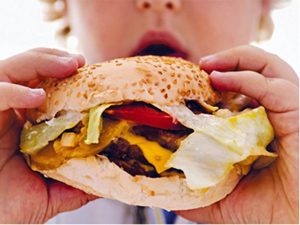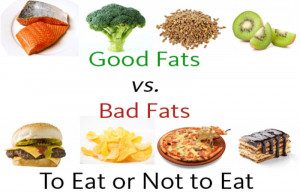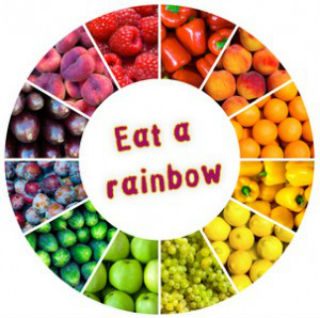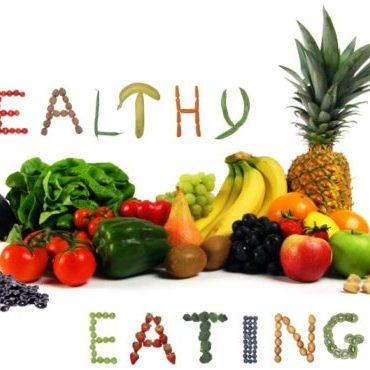 Arlene tackles the topics of obesity, BMI, gastric banding and more
Arlene tackles the topics of obesity, BMI, gastric banding and more
I have dreadful sweet cravings and wondered if this indicates there is something missing from my diet. I became a vegetarian a year ago and thought that this could perhaps be causing this desire for lollies, chocolates, cakes and biscuits which I previously never felt like. These cravings are mainly in the latter part of the day.
It would be necessary for me to analyse your overall diet before I could determine whether your intake is deficient in any of the vitamins or minerals. When the cravings occur later in the day, it is often due to a drop in blood sugar levels, which may be due to not eating sufficient throughout the day. I would suggest you eat six small meals during the day, and try to satisfy the sweet cravings with nutritious foods such as fruit or yoghurt. In addition, when one is tired you experience sweet cravings. Ensure that you are not iron deficient, or perhaps you lack sleep or are doing too much.
I am always trying to lose weight and have just been reading a book on food combining. What do you think of this diet? I am so desperate to “shrink” that I will try anything. I do not understand it, but they give menus that I can follow. Can you explain how it works and if you think it is healthy or not?
The concept behind food combining diets is that proteins require acids to digest and carbohydrates require alkali, so mixing the two creates incorrect digestion – and one of the consequences is obesity. Should you subscribe to this diet, you can say good-bye to toasted cheese and tomato sandwiches, meat and potatoes, lamb curry and rice and spaghetti bolognaise. The notion that starch foods need an alkaline solution while protein foods need an acid environment is rubbish. The stomach is an acid environment and has a pH of 1; so all foods entering the stomach experience this intense acid. In addition, there is hardly a single food that is a pure protein or pure carbohydrate. Most foods, whether they classify them as carbohydrates, proteins, or fats are a combination. Bread, all grains and cereal foods, legumes, nuts and milk contain protein and carbohydrates within the same food. This diet is not recommended; it carries a high risk of you becoming nutrient deficient. We should be combining foods rather than separating them. The body is perfectly equipped to cope with such mixtures. In addition, if you are participating in sport, it may provide insufficient energy.
How is obesity diagnosed?
The most common way to find out whether you’re overweight or obese is to figure out your body mass index (BMI). BMI is an estimate of body fat, and it’s a good gauge of your risk for diseases that occur with more body fat.
BMI = weight (in kilograms) / height (in metres) squared
For example, if you weigh 70 kg and are 1.7 metres tall:
70/ (1.7)squared = 24
According to the table below, you would fall into the high level of the normal range.
The higher your BMI, the higher your risk of disease. BMI is calculated from your height and weight. These BMI ranges apply to adults and are not applicable to children under 18.
What Does Body Mass Index Mean?
BMI
18.5–24.9
Normal weight
25.0–29.9
Overweight
30.0–39.9
Obese
40.0 and above
Extreme obesity
Although BMI can be used for most men and women, it does have some limits. It may overestimate body fat in athletes and others who have a muscular build. BMI also may underestimate body fat in older people and others who have lost muscle.
Another way to check wheth3er you are a healthy size is to measure your waist circumference as a check on your abdominal fat. If you have a waist measurement of 94cm + (men) or 80 cm + (for women) you are at an increased risk of developing problems such as heart disease and diabetes due to excess abdominal fat.
 What foods cause heartburn?
What foods cause heartburn?
Heartburn, also known as acid reflux, is a painful and burning sensation in the oesophagus, just behind the breastbone usually associated with regurgitation of gastric acid (gastric reflux). The pain often rises in the chest and may radiate to the neck, throat, or angle of the jaw. Heartburn is a major symptom of gastro-oesophageal reflux disease, otherwise known as GERD; acid reflux is also identified as one of the causes of chronic cough, and may even mimic asthma. Despite its name, heartburn actually has nothing to do with the heart; it is so-called because of a burning sensation near to where the heart is located – although some heart problems may give rise to a similar burning sensation.
What foods you should avoid:
• Acidic foods – citrus fruits and tomato products may trigger your heartburn because they take longer to digest and increase the amount of stomach acid produced.
• Heartburn beverages – coffee, alcohol, carbonated drinks, acidic fruit juices and tomato juice may cause heartburn. Many of these drinks also contain excess calories that can contribute to weight gain. Instead, opt for non-citrus juices, water and tea.
What is Gastric Banding?
Gastric banding is surgery to help with weight loss. The surgeon places a band around the upper part of your stomach to create a small pouch to hold food. The band limits the amount of food you can eat by making you feel full after eating small amounts of food.
After surgery, your doctor can adjust the band to make food pass more slowly or quickly through your digestive system.
 How Do Unhealthy Fats in Your Diet Contribute to High Cholesterol?
How Do Unhealthy Fats in Your Diet Contribute to High Cholesterol?
Foods like cheese, butter, sausage, biscuits, cakes, and desserts may taste good to you, but they can have a lot of saturated fat and cholesterol. Eating too much of these unhealthy fats could lead to high cholesterol and heart disease.
Start with small changes first. Use heart-healthy olive or canola oil instead of butter for cooking. Drink fat-free or low-fat milk instead of 2% milk or whole milk. Pick leaner cuts of meat.
Eating foods that contain saturated fats or trans fats can raise the LDL (“bad”) cholesterol in your blood. Having a high level of LDL cholesterol increases your chance of clogged arteries (atherosclerosis), which can lead to coronary artery disease and heart attack.
Trans fats also are unhealthy. Try as much as possible to avoid eating them. Trans fat raises the level of “bad” LDL cholesterol in your blood and lowers the “good” HDL cholesterol in your blood.
HDL cholesterol is important. It helps clear the bad cholesterol from your blood so it does not clog your arteries. A high level of HDL can lower your risk of having a heart attack.
Remember, your body needs some fat to be healthy. Use the example below as a guide for eating less saturated fat.
In general:
No more than 10% of your daily calories should come from saturated fat. This is about 20 grams of fat in a 2,000-calorie diet.
No more than 10% of your daily calories should come from polyunsaturated fat. This is about 20 grams in a 2,000-calorie diet.
Monounsaturated fats can be up to 15% of your daily calories. This is about 25 to 30 grams in a 2,000-calorie diet.
If you’re not sure how much fat you should be eating or how many calories you need each day to stay at a healthy weight, talk to an Accredited Practising Dietitian who can help you create a plan that’s right for you.
 What is the Difference between Vegetarianism and Veganism?
What is the Difference between Vegetarianism and Veganism?
By definition, vegetarians are those individuals that do not eat any meat products (meat, chicken, fish), they will, however, eat dairy products and eggs. Vegans, on the other hand, do not consume any animal products at all! Or derivatives of such. So guess where an egg comes from? A Chicken! And milk? A cow! So you can cross both eggs and milk off your list. The Vegan diet walks a hard thin line.
How can I lose weight since becoming menopausal?
Menopause occurs when a woman stops ovulating and her monthly period (menstruation) ceases. Menopause actually means the last menstrual period. The average age of natural menopause is 51 years but can occur much earlier or later. Menopause that occurs before the age of 45 is called early menopause and before the age of 40 is premature menopause.
At this time, most women (around 2/3 of women) experience weight gain or difficulty maintaining their usual weight. Most women will gain about 5-7 kilos during their menopausal years. You also discover that the weight gain tends to accumulate around the abdomen, rather than the hips and thighs as before menopause. People commonly refer to this as an “apple” shape, because the stomach area becomes rounder. An extra kilo before menopause will settle evenly over hips, bottom, thighs, and arms. After menopause, it all goes around the middle! Most of this weight will come on gradually – generally about a ½ kilo a year.
As you enter the early stages of menopause, maintaining weight becomes more and more difficult, and losing weight becomes almost impossible. This is because of the fluctuation in your hormones. Your body’s hormones have a direct impact on your appetite, metabolism, and fat storage. At this stage, women can develop “insulin resistance” making their bodies store fat, rather than burn calories. This “insulin resistance” changes how our bodies handle the foods we eat. For example, if you ate 1,000 calories before menopause, you would burn 700 of them and store around 300. After menopause, your body will store 700 and burn only 300! This is a big difference, and the result is weight gain! Even a modest weight gain can result in a change of dress size.
Excessive weight gain could also be a sign that something is wrong with your hormone levels, blood sugars, or eating habits. Visit your doctor if your weight gain is out of control. Excessive fat stored around the abdomen can lead to an increased risk for heart disease, high blood pressure, diabetes, breast cancer, and high cholesterol.
Here are a few tips to help you:
Reduce calories. Menopausal women need fewer calories to maintain their former body weight. It may be necessary to cut calorie intake by 10 to 15 per cent while at the same time increasing the level of activity or exercise. If women don’t reduce their calorie intake, they are overeating. Calories needs are the highest during the mid-20s. The daily calorie needs, as women age, then reduce at about 2% to 4% for every 10 years added. Eat a balanced diet. Avoid refined sugars and indulge in fruits and vegetables. Choose foods low in fat, saturated fat, and cholesterol. Fat intake should be less than 30 per cent of daily calorie intake. Women of all ages should consume 20 to 30 grams of fibre daily.
Portion Control. Eat slowly and practice portion control – this does not mean you have to eliminate your favourite foods. Just eat smaller quantities.
Avoid crash or fad diets. Starvation will only cause your metabolism to slow down, causing you to gain more weight later on. Fad diets simply don’t work — over 95% of dieters gain back the weight they lose and more.
Maintain adequate intake of water: So many of the bodily functions rely on the body being adequately hydrated. Drinking 6 to 8 glasses daily is ideal. New studies say that you can drink tea and coffee as part of your daily water requirements. A couple of cups a day are fine as part of your water intake. We are talking about black coffee, not coffee house drinks.
Don’t lose large amounts of weight. There is a balance between being too thin and just right. Being very thin can lead to an increased chance of developing osteoporosis.
Increase your physical activity. Exercise becomes particularly important as a woman ages. Regular exercise benefits the heart and bones helps regulate weight, and can be a mood enhancer, creating a better sense of well-being. Women who are physically inactive are more likely to suffer from coronary heart disease, obesity, high blood pressure, diabetes, and osteoporosis. Weight loss still requires that you burn more calories each day than you take in. Do aerobics to increase your metabolism and burn fat. Do weight-bearing activities such as walking and cycling to increase muscle mass and ward off osteoporosis. When women diet to lose weight after menopause, they will not be able to continue to lose weight unless exercise is added to the daily routine. Exercise prevents the decrease in metabolism that occurs when women diet without exercising. But, you must exercise consistently, preferably daily. Start with 5 minutes of walking each day and work to gradually increase the duration of whatever exercise you are doing. Work to increase your exercise time to 60 minutes daily.

